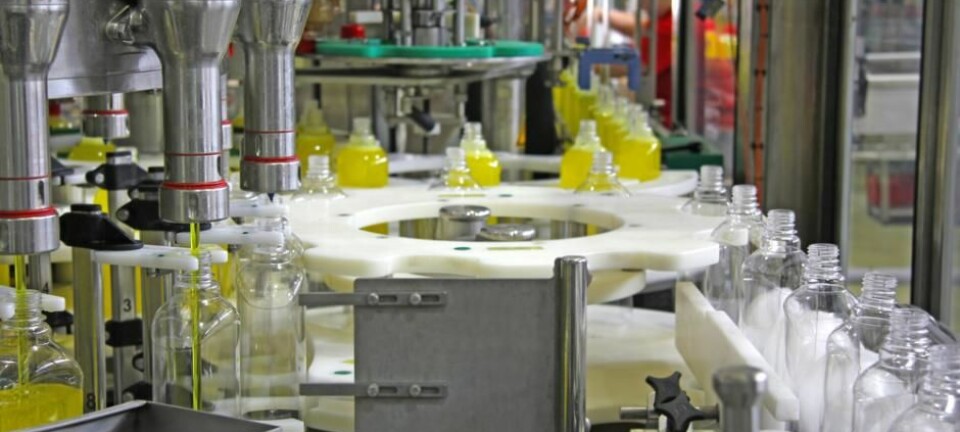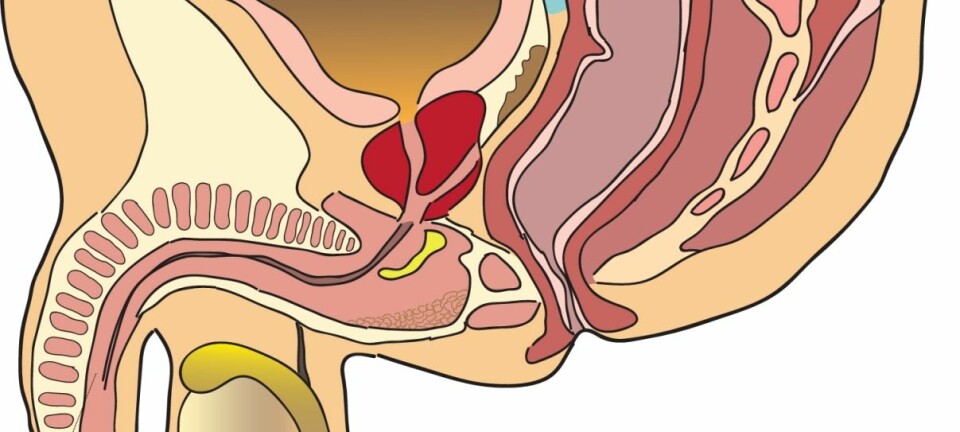
Hazardous substances are still distributed long after being banned
It can take decades for the EU to ban a substance that contains endocrine disrupting chemicals and even then sales of products containing these chemicals can continue for years.
It can take 30 years before a substance identified as an endocrine disrupting chemical (EDC) is banned from commercial production in, e.g., children’s toys, paint, or cosmetics.
Even then, this does not mean that all products containing the hazardous substance are immediately removed from the store shelves.
According to the Danish Environmental Protection Agency (EPA), it can take many more years before banned and potentially dangerous substances are totally removed from shops.
Scientists are critical of this practice, which in the worst case scenario has negative impacts for consumer health.

“The consequence of delaying product removal is that more people can be affected by hormone-related diseases. There’s a risk that more children will be born with genital birth defects and more people with have problems having children later on,” says Professor Ulla Hass from the Research Group for Molecular and Reproductive Toxicology at the Technical University of Denmark (DTU).
You can see how the EU evaluates chemical substances in the interactive graphic below.
Read More: EU authorities too slow: People exposed to endocrine disrupters for decades
Hazardous chemicals stay in the stores for years
The EU has different legal requirements with regard to industrial chemicals and cosmetics, but both industries are permitted to continue to sell substances after they are banned.

For example, the Danish EPA banned a chemical component that went into some sun creams in 2015, but products containing this chemical were still found in shops until February 2016.
“We banned UV-filter 3-BC in 2015 and goods should have been removed from the shops in 2016—that’s one year later," says Bettina Ørsnes Larsen, who works with cosmetics regulations at the Danish EPA.
According to Larsen, a normal "implementation period" is between six months to a few years, where products can still be sold.
The rules are more relaxed for manufacturers of industrial paints and plastics. In these industries products can remain on sale until they are sold out.
“Manufacturers are given a date for when the production of goods that contain potentially hazardous chemicals must stop. The period varies, but it can go for many years and it’s still legal to sell these products until no more are left,” says Magnus Løfstedt from the Danish EPA who works with regulations of the chemical industry in Denmark.
However, consumers can enquire about products with the manufacturers directly, who are required to respond within 40 days if they suspect a substance to be hazardous, he says.
Read More: Bad chemistry: Chemical companies fail to comply with EU regulations
Poor fertility, birth defects, and cancer
Exposure to EDCs can have big consequences, regardless of whether they are found in cosmetics or paint, says Anna-Maria Andersson, research leader at the Center for Endocrine Disrupters (CeHoS) and research scientist at the Department of Growth and Reproduction at Rigshospitalet, Denmark.
“The worst case scenario is that the chemicals influence the foetus because this can lead to birth defects. Moreover, the chemical can mean that you cannot have the children you always wished for, because you’ve become infertile. It’s also likely that EDCs play a role in the development of breast and testicular cancer,” says Andersson.
Hass agrees. The exposure period should be limited to protect consumer health, she says.
“When it takes such a long time from a substance being banned to it being taken away from the consumer, it naturally delays protecting people from the chemicals,” says Hass.
What are Endocrine disrupting chemicals and why are they so harmful? (Video: Kristian Højgaard Nielsen / ScienceNordic)
Lack of control of illegal products
According to EU regulation, it is the manufacturer’s responsibility to inform shops in each country in which they operate that the products could contain hazardous substances.
But shops can legally continue to sell their stocks of these potentially hazardous products.
The time it takes for all products carrying the banned chemicals to disappear from the shelves depends on the chemical being regulated. But authorities cannot always control the new regulations, says Larsen.
And there are no systematic controls to ensure that the products of concern are recalled.
“The stores are obligated to keep an eye on which substances are banned. If we discover banned products in the stores, the EPA’s chemical inspection asks the stores to remove the goods—but it only happens if consumers report a suspected substance or when it's checked,” says Larsen.
In rare cases authorities can ask to recall cosmetic products at the time that they are banned if they are assessed to be an acute risk. But it hasn’t happened yet in Denmark, says Larsen.
Read More: Endocrine disrupters in food and clothing replaced by equally dangerous chemicals
Consumers should be sceptical
It is also up to consumers to stay up to date with the research and to thoroughly read product descriptions when they buy a new face cream, cleaning product, or paint.
Although it can be difficult for consumers to know which substances have been evaluated as EDCs.
“At the moment, there’s many different lists of suspect substances out there, and it’s very difficult to have the full overview as a consumer,” says Marie Louise Holmer from the Danish EPA.
Holmer recommends that people look for the EU Eco label, which is the official EU mark that certifies a product as avoiding certain hazardous chemicals.
Read more: Chemical cocktails in foods increase cancer risk
Consumer Council: “It’s not good enough”
The gap between a product being banned and disappearing from the shop shelves is far from satisfactory, according to the The Danish Consumer Council, THINK Chemicals.
“We don’t think that there’s enough consumer protection when banned products are available to buy a long time after it has been highlighted as problematic. The products should be recalled much sooner,” says Stine Müller, project manager at THINK Chemicals.
The process is skewed too much in the manufacturer’s favour, says Müller.
“The evaluation of substances takes far to long, which means that the manufacturers have had a long time to react to the knowledge that the chemicals are problematic. When they’re finally banned it again takes many years before they’re removed from stores. That’s not good enough,” she says.
Even though the effects of EDCs do not appear instantaneously, they are still dangerous in the long run, after long exposure, says Hass.
“With salmonella, symptoms appear at the same time, these types of hormone effects could first show themselves 20 years later. But this doesn’t make the consequences less dangerous,” she says.
Explore the interactive graphic to see how the EU evaluates hazardous substances (Graphic: Mette Friis Mikkelsen / ScienceNordic)
---------------
Read the full article in Danish on Videnskab.dk
Translated by: Catherine Jex
External links
- Ulla Hass
- Anna-Maria Andersson
- Bettina Ørsnes Larsen
- Marie Louise Holmer
- Stine Müller
- List of suspect substances according to the Danish EPA












